Related Research Articles

The Industrial Revolution, sometimes divided into the First Industrial Revolution and Second Industrial Revolution, was a period of global transition of the human economy towards more widespread, efficient and stable manufacturing processes that succeeded the Agricultural Revolution. Beginning in Great Britain, the Industrial Revolution spread to continental Europe and the United States, during the period from around 1760 to about 1820–1840. This transition included going from hand production methods to machines; new chemical manufacturing and iron production processes; the increasing use of water power and steam power; the development of machine tools; and the rise of the mechanized factory system. Output greatly increased, and the result was an unprecedented rise in population and the rate of population growth. The textile industry was the first to use modern production methods, and textiles became the dominant industry in terms of employment, value of output, and capital invested.

Haute-Saône is a department in the Bourgogne-Franche-Comté region of northeastern France. Named after the river Saône, it had a population of 235,313 in 2019. Its prefecture is Vesoul; its sole subprefecture is Lure.
Creative destruction is a concept in economics that describes a process in which new innovations replace and make obsolete older innovations.

A landscape is the visible features of an area of land, its landforms, and how they integrate with natural or human-made features, often considered in terms of their aesthetic appeal. A landscape includes the physical elements of geophysically defined landforms such as mountains, hills, water bodies such as rivers, lakes, ponds and the sea, living elements of land cover including indigenous vegetation, human elements including different forms of land use, buildings, and structures, and transitory elements such as lighting and weather conditions. Combining both their physical origins and the cultural overlay of human presence, often created over millennia, landscapes reflect a living synthesis of people and place that is vital to local and national identity.

Shifting cultivation is an agricultural system in which plots of land are cultivated temporarily, then abandoned while post-disturbance fallow vegetation is allowed to freely grow while the cultivator moves on to another plot. The period of cultivation is usually terminated when the soil shows signs of exhaustion or, more commonly, when the field is overrun by weeds. The period of time during which the field is cultivated is usually shorter than the period over which the land is allowed to regenerate by lying fallow.

The Duwamish River is the name of the lower 12 miles (19 km) of Washington state's Green River. Its industrialized estuary is known as the Duwamish Waterway. In 2009, the Duwamish Longhouse and Cultural Center was opened on the west bank of the river as part of the tribe's reassertion of its historic rights in the area and its continuing struggle for federal recognition of tribal status.
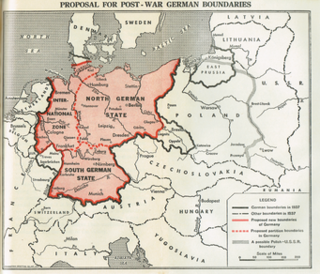
The Morgenthau Plan was a proposal to weaken Germany following World War II by eliminating its arms industry and removing or destroying other key industries basic to military strength. This included the removal or destruction of all industrial plants and equipment in the Ruhr. It was first proposed by United States Secretary of the Treasury Henry Morgenthau Jr. in a 1944 memorandum entitled Suggested Post-Surrender Program for Germany.
Landscape archaeology, a sub-discipline of archaeology and archaeological theory, is the study of the ways in which people in the past constructed and used the environment around them. It is also known as archaeogeography. Landscape archaeology is inherently multidisciplinary in its approach to the study of culture, and is used by pre-historical, classic, and historic archaeologists. The key feature that distinguishes landscape archaeology from other archaeological approaches to sites is that there is an explicit emphasis on the sites' relationships between material culture, human alteration of land/cultural modifications to landscape, and the natural environment. The study of landscape archaeology has evolved to include how landscapes were used to create and reinforce social inequality and to announce one's social status to the community at large. The field includes with the dynamics of geohistorical objects, such as roads, walls, boundaries, trees, and land divisions.

The IDF Caterpillar D9 — nicknamed Doobi — is a Caterpillar D9 armored bulldozer used by the Israel Defense Forces (IDF). It is supplied by Caterpillar Inc. and modified by the Israel Defense Forces, Israeli Military Industries and Israel Aerospace Industries to increase the survivability of the bulldozer in hostile environments and enable it to withstand attack.

Slighting is the deliberate damage of high-status buildings to reduce their value as military, administrative or social structures. This destruction of property is sometimes extended to the contents of buildings and the surrounding landscape. It is a phenomenon with complex motivations and was often used as a tool of control. Slighting spanned cultures and periods, with especially well-known examples from the English Civil War in the 17th century.
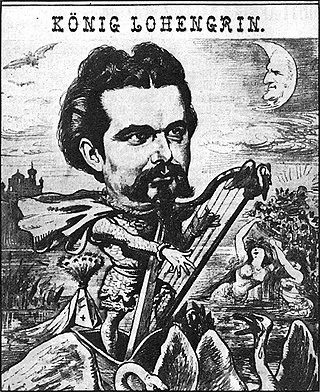
Escapism is mental diversion from unpleasant aspects of daily life, typically through activities involving imagination or entertainment. Escapism also may be used to occupy one's self away from persistent feelings of depression or general sadness.

Land degradation is a process in which the value of the biophysical environment also known as biochemical environment is affected by a combination of human-induced processes acting upon the land. It is viewed as any change or disturbance to the land perceived to be deleterious or undesirable. Natural hazards are excluded as a cause; however human activities can indirectly affect phenomena such as floods and bush fires.

Ribbon development refers to the building of houses along the routes of communications radiating from a human settlement. The resulting linear settlements are clearly visible on land use maps and aerial photographs, giving cities and the countryside a particular character. Such development generated great concern in the United Kingdom during the 1920s and the 1930s as well as in numerous other countries during the decades since.
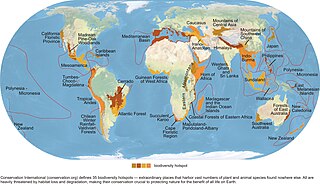
Habitat destruction occurs when a natural habitat is no longer able to support its native species. The organisms once living there have either moved to elsewhere or are dead, leading to a decrease in biodiversity and species numbers. Habitat destruction is in fact the leading cause of biodiversity loss and species extinction worldwide.
The modern era or the modern period, also known as modern history or modern times, is the period of human history that succeeds the post-classical era, which ended around 1500 AD, up to the present. This terminology is a historical periodization that is applied primarily to European and Western history.
Consumer capitalism is a theoretical economic and social political condition in which consumer demand is manipulated in a deliberate and coordinated way on a very large scale through mass-marketing techniques, to the advantage of sellers.
Torbat-e Jam is a city in the Central District of Torbat-e Jam County, Razavi Khorasan province, Iran, serving as capital of both the county and the district. It is one of the ancient cities of Greater Khorasan.
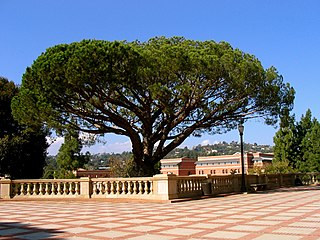
A terrace is an external, raised, open, flat area in either a landscape near a building, or as a roof terrace on a flat roof.
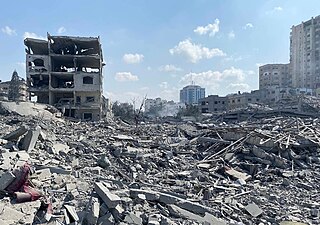
Domicide is the widespread destruction of a living environment forcing the incumbent humans to move elsewhere. In a human rights context, domicide is the deliberate and systematic destruction of housing and basic infrastructure, making an area uninhabitable. The concept of domicide originated in the 1970s, but only assumed its present meaning in 2022, after a report by the UN Special Rapporteur on the Right to Adequate Housing.
Identicide is the deliberate, systematic and targeted destruction of the places, symbols, objects, including ideas, values and aesthetica, and other cultural property that represent the identity of a people, with the intent to erase the cultural narrative and memory of that people, demoralize a population, absorb it into another cultural/political verity, or to rid an area of that people altogether.
References
- ↑ Swanson, Kelly (2009). AP Human Geography 2009. Kaplan. p. 153.
- ↑ Porteous, Douglas; Sandra E. Smith (2001). Domicide: The Global Destruction Of Home. McGill-Queen's Press - MQUP. p. 12. ISBN 9780773569614.